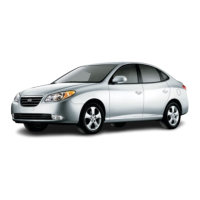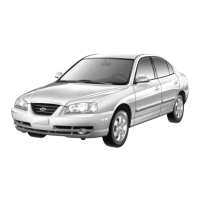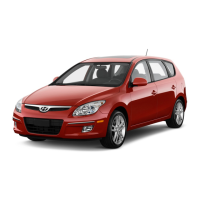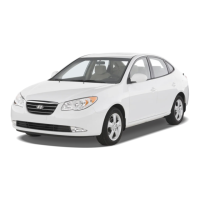
Do you have a question about the Hyundai Elantra N and is the answer not in the manual?
| Brand | Hyundai |
|---|---|
| Model | Elantra N |
| Category | Automobile |
| Language | English |
Overview of the manual and HYUNDAI.
Information about genuine parts and their identification.
Alerts to potential hazards and precautions.
Specifications and recommendations for fuel.
Warnings about modifications and unauthorized electronic devices.
Precautions for the first 600 miles for optimal performance.
Identification of exterior parts with a front view illustration.
Identification of interior controls and features.
Identification of components in the engine compartment.
Information on tire size, inflation pressure, and wheel nut torque.
Table of recommended lubricants and fluid capacities.
General information and customer care contact details.
Procedures for reporting safety defects to NHTSA and HYUNDAI.
Essential safety advice for using seats, belts, and airbags.
Adjusting driver's and front passenger's seats for safety and comfort.
Proper usage and precautions for seat belts.
Guidelines for using child restraint systems and their types.
Overview of the SRS airbag system and its components.
Key safety advice regarding airbags.
Introduction to the instrument cluster and its controls.
Explanation of various gauges and meters on the instrument cluster.
Explains various warning and indicator lights.
Indicates underinflated tires or TPMS malfunction.
Displays various system messages and warnings.
Allows changing settings for instrument cluster, doors, lamps, etc.
Information on using the Hyundai Smart Key for locking, unlocking, and starting.
Steps to lock the vehicle using the smart key or door handle button.
Steps to start the vehicle remotely using the smart key.
Information on using the Hyundai Digital Key mobile app.
Operating door locks from outside the vehicle using the mechanical key.
How to use child safety locks to prevent accidental door opening.
System to help prevent drivers from leaving passengers in rear seats.
Using HomeLink to control garage doors and other devices.
Operation of windshield wipers and washers.
Controls for manual climate control system.
How to operate heating and air conditioning.
Pre-drive checks including windows, mirrors, lights, and tires.
Operation and safety precautions for the Engine Start/Stop button.
Operation and safety precautions for manual transmission.
General advice for safe and efficient driving.
Information on the vehicle's brake system.
How to apply and release the parking brake.
How ABS prevents braking skids and its limitations.
How ESC helps stabilize the vehicle.
Advice for driving in hazardous conditions.
Advice for minimizing winter driving problems.
Understanding vehicle weight ratings and load limits.
System to detect and warn about potential collisions.
System to detect lane markings and assist steering.
System to detect vehicles in blind spots.
System to warn about approaching vehicles when exiting.
System to set and maintain a speed limit.
Monitors driver's attention level and recommends breaks.
System to maintain vehicle speed without accelerator pedal.
System to detect lane markings and assist steering.
Shows the area behind the vehicle for parking assistance.
Detects approaching vehicles while reversing.
Warns about obstacles when moving at low speeds.
Serves as a warning to other drivers during emergencies.
Procedure if the engine stalls at an intersection.
Troubleshooting steps when the engine won't start.
Procedures and safety precautions for jump starting.
Steps to take if the engine overheats.
Information on checking tire pressure and TPMS indicators.
Using the Tire Mobility Kit for temporary tire repair.
Information on towing services and procedures.
Procedures for emergency towing without wheel dollies.
General information about maintenance services.
Checks to perform when stopping for fuel.
Procedures for engine oil and filter changes.
Information on engine coolant and its level.
Checking the brake/clutch fluid level.
How to check the parking brake's effectiveness.
Filter replacement for the air cleaner.
Inspection and replacement of wiper blades.
Safety precautions and information related to the vehicle battery.
Information on tire care, pressure, and replacement.
Information on the vehicle's electrical system protection by fuses.












